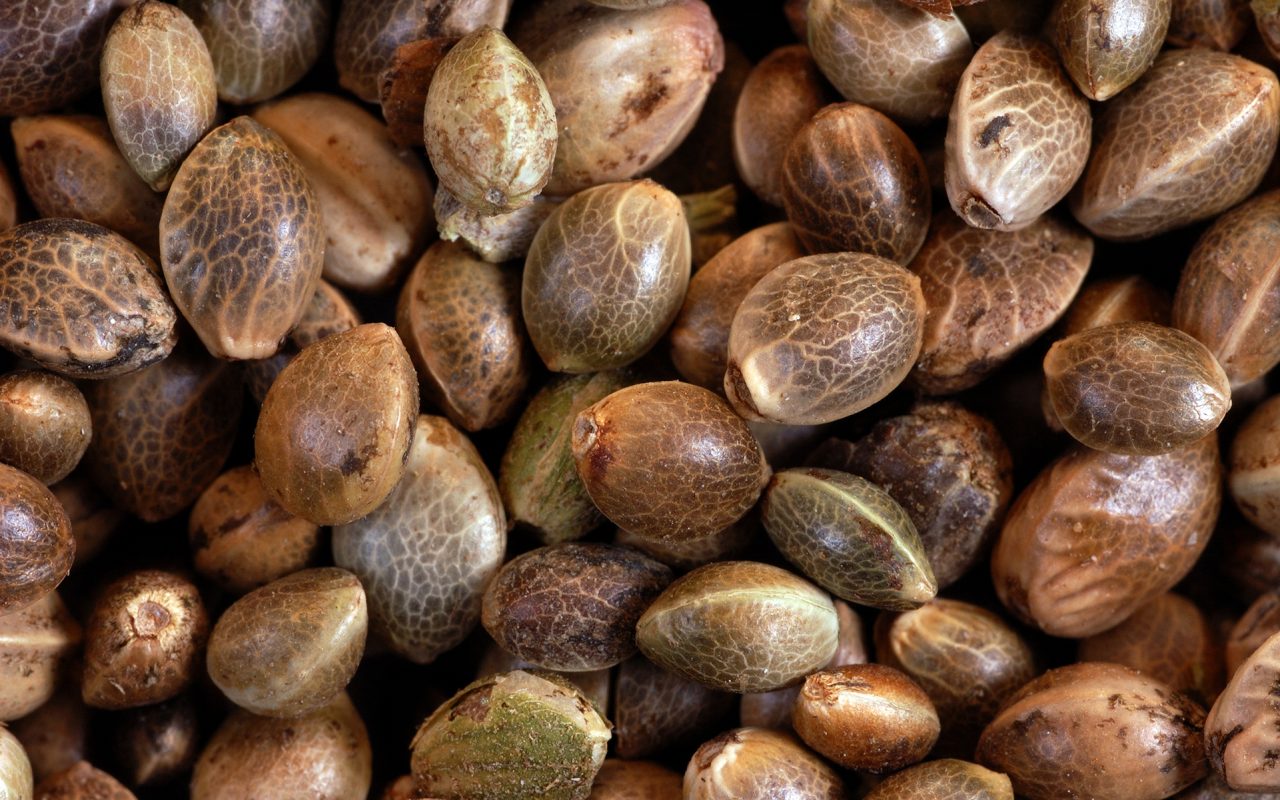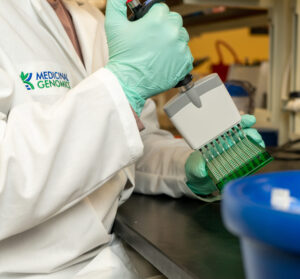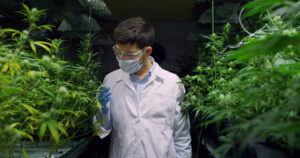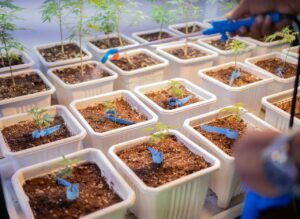Through much of the 20th century, it was common for cannabis flowers to be loaded with seeds. It wasn’t until the 1970s that a cannabis grower figured out how to make “sensimilla” or seedless cannabis flower. The trick is to make sure female cannabis plants, which produce the cannabinoid-rich buds we all know and love, are not pollinated by male pollen.
Not only will fertilized female cannabis plants produce seeds flowers, but is will produce much lower concentrations of cannabinoids, terpenes, and flavonoids. That is because the plant uses valuable energy producing seeds that could have otherwise gone towards bud production.
It’s safe to say that the majority of cannabis growers want an all-female garden. To achieve that, some growers purchase feminized seeds, which have been specifically bred to only produce female plants. However, feminized seeds are typically more expensive than traditional seeds and some believe plants grown from feminized seeds have reduced genetic diversity, which increases the likelihood of acquiring genetic deficiencies.
So if you are growing from traditional seed, you must identify and eliminate male cannabis plants before they can release their pollen and ruin your crop.
When do cannabis plants show first signs of sex?
The earliest visual indicator of cannabis plant sex comes in the form of “pre-flowers”, which develop between the fourth and sixth nodes of the plant.
Male pre-flowers appear as tiny, smooth, egg-shaped pollen sacs about three to four weeks after germination. Female pre-flowers emerge a little later, between four and six weeks after germination, in the form of small V-shaped pistils with white or pink hairs.

What are other signs of cannabis sex?
Using pre-flowers to identify the male and female cannabis plants can be challenging, especially if you are a novice grower. To be sure you know which ones are which, you can look for other signs, including:
- Stem width. Males tend to have thicker stems than females
- Branching. Females are typically shorter and bushier than males, which usually grow tall with fewer branches
- Leaves. Males will typically have fewer leaves than females.
When do male cannabis plants release pollen?
Typically, male cannabis plants release pollen four to five weeks after flowering has been initiated. By then, the differences between male and female plants should be very apparent. The males plant will have produced several small pollen-filled sacs at the nodes, while the female will have started to develop recognizable flowers.
If the pre-flowers and the other signs of plant sex were not clear enough during the vegetative state, you could initiate flowering and see how your plants develop. Within the first two weeks, it will be obvious which is which. However, this can be a risky strategy. Although the male plants will not broadcast their pollen until four to five weeks after flowering, you may inadvertently release some pollen when you remove the males.
Determine Cannabis Plant Sex Just One Week After Germination with DNA testing
Cannabis plant sex can be determined weeks before they exhibit any visible sex traits using DNA-based testing. DNA is collected from one of the plant’s leaflets, as early as one week after germination. qPCR detection assays, such as FemINDICAtor, then look for the presence of a y-chromosome. If it is detected, you know you have a male plant, and it can be culled before it ever makes it out of the seedling tray.
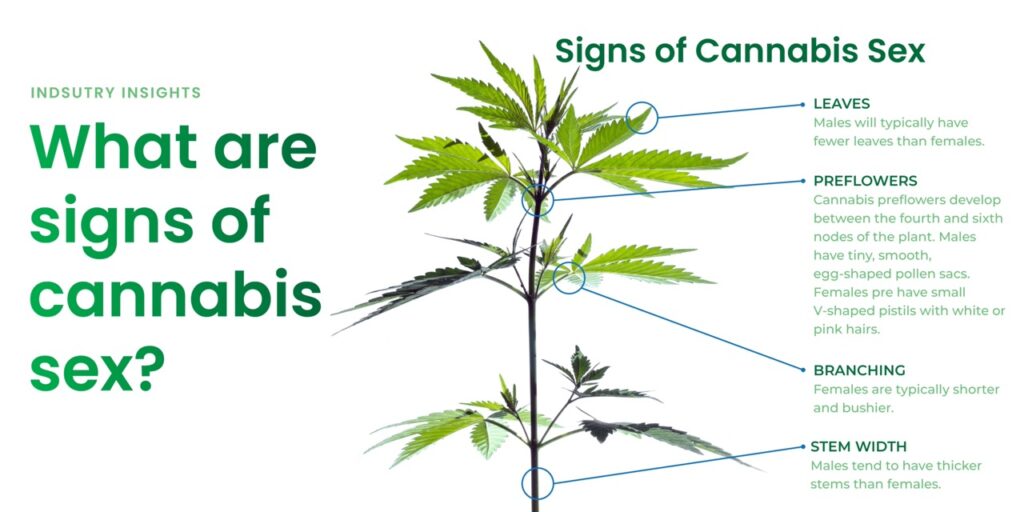
How much does Cannabis Plant Sex Testing Cost?
Growers who have a qPCR instrument and a basic in-house lab setup can screen cannabis plants for gender for less than $5 per sample. Alternatively, growers can submit leaf samples to testing labs that provide sex testing as a service. Cannabis sex testing services can cost between $10 and $15 per plant depending on the provider and whether they offer volume-based discounts.
Verify Feminized Seeds are Male-Free [White Paper]
Colorado Seed Inc. successfully demonstrated that the Medicinal Genomics FemINDICAtor® qPCR Plant Sex Detection Assay can detect one male seed in batches of 50 or 100. These results mean that feminized seed producers and farmers who purchase them have a simple and reliable
When You Determine Plant Sex Matters
Maximize Square Footage
Cultivators may need to grow plants for six weeks before they observe evidence of sex. That means for six weeks half of the grow space will be occupied by males. By identifying male cannabis plants when they are still seedlings, growers can guarantee that any plants they put in their vegetation room or in their field will be female. This enables growers to maximize their footprint and practically double their yield from the same area.
Save Resources
While cultivators are waiting for males to show their gender, the plants have consumed six weeks worth of nutrients, taken up tray/floor space, and occupied growth media. With early sex detection testing, growers can guarantee that these precious assets are spent exclusively on productive females.
Cut Labor
It takes time and effort to determine cannabis sex visually. Workers must closely examine every plant, searching for indications of sexual activity. Staff could be doing a gazillion other productive things instead of staring at plants to determine their gender. Conversely, collecting leaf punches for DNA testing is a much easier process. Furthermore, by screening plants in the seedling tray, there is no need to waste time or effort transplanting males just to remove and discard them weeks later.
Get Started with Cannabis Plant Sex Testing
DNA testing removes all the guesswork out of cannabis plant sex determination and provides results weeks earlier than visual methods. Early results mean you can spend less time, money, and resources growing male plants, so you can focus on valuable females.
Many commercial growers have invested in qPCR instruments and reagents so they can test for a variety of plant pathogens and genetic traits in-house, including plant sex. For smaller growers, several testing labs provide plant sex testing as a service using Medicinal Genomics reagents. Complete the form below and we will be happy to connect you with one of those labs!


